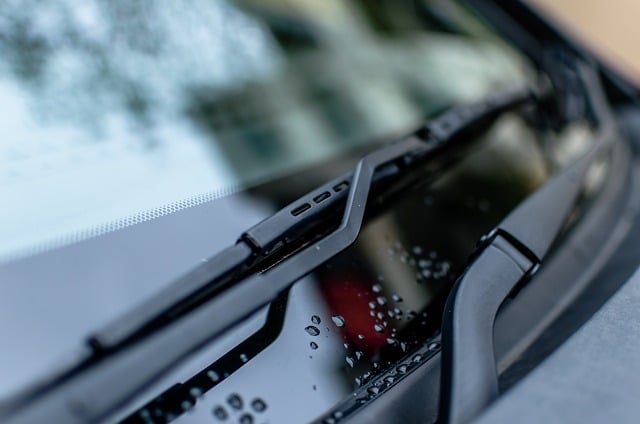Over the centuries, countless inventors and scientists have made significant contributions to our understanding of the world around us. Unfortunately, not all of them have received the attention they deserve, and many have yet to make it into our history books for one reason or another. This is despite the fact that many of the technologies we use today, such as computer programs, wireless devices, tin cans, filmmaking, and many others, were developed by these forgotten inventors of history.
10. Joseph Glidden

Barbed wire played a crucial role during the westward expansion of American history. It allowed for the enclosure of vast tracts of land that had previously been open and vulnerable, making it easier for ranchers to control their herds and farmers to protect their crops. It also contributed to the end of the open-range system and the emergence of large-scale agriculture across the country, making it much easier to enforce land rights.
Joseph Glidden, an Illinois farmer and businessman, is credited with inventing the first successful barbed wire design in 1874. He experimented with various prototypes for several years before coming up with the idea of wrapping two metal wires with sharp spikes. Glidden patented his design in 1874 and began mass-producing it. Soon, barbed wire became a common sight on farms and ranches across the American West, making him one of the most successful inventors and businessmen in American history.
9. Martin Cooper

Martin Cooper is an American engineer and inventor who is also sometimes referred to as the “father of the cell phone” as his invention eventually paved the way for the development of modern smartphones. In 1973, he led the team that created the first mobile phone called the Motorola DynaTAC, which completely changed the way we communicate with each other.
Cooper began his career in the telecommunications industry in the 1950s, working for companies such as Teletype Corporation and Motorola. Sometime in the late 1960s, he began working on the design of a portable cell phone that would allow people to make calls from anywhere, rather than from fixed locations.
On April 3, 1973, Cooper made the first mobile phone call with a Motorola DynaTAC to Joel Engel of AT&T. Although the DynaTAC later became the first commercially available cellular phone, it was still prohibitively expensive and out of reach for most people, delaying mass adoption for several years.
8. Mary Anderson

Today, a windshield wiper may be an essential safety feature for a car, but it wasn’t always that way. It was invented by Mary Anderson, an American inventor who came up with the idea in 1902 after noticing that drivers at the time had to stop their cars and manually clear snow, rain, and debris from their windshields to improve visibility. It was dangerous and time-consuming.
Anderson’s earliest prototype consisted of a lever that could be used to move a rubber blade across the windshield from inside the car. She patented it in 1903, although it would take many more years for drivers to warm up to the idea. At the time, many car manufacturers were skeptical about the need for windshield wipers in cars and were therefore slow to adopt the technology. Apparently, they were wrong, as windshield wipers are standard equipment on nearly every car sold worldwide today. Since her invention, Mary Anderson has received a number of awards and honors for her contributions to automobile safety, including her induction into the National Inventors Hall of Fame in 2011.
7. Dietrich Nikolaus Winckel

A mechanical metronome is a device used by musicians to measure time and regulate tempo. It was invented in the early 19th century by Dietrich Nikolaus Winckel, a Dutch inventor and clockmaker. Winckel's 1814 "musical chronometer" consisted of a pendulum whose speed could be adjusted using a sliding weight. However, he was unable to patent it, and credit initially went to a German inventor named Johann Nepomuk Maelzel, who copied Winckel's prototype and began selling it under his own name.
Maelzel's marketing efforts were so successful that the metronome soon became widely known as the "Maelzel Metronome." Beethoven was the first composer to use metronome markings in his compositions, which soon became common practice for musicians around the world. Although Winkel's original design was initially forgotten, he is now recognized as the true inventor of a device that changed music forever. The metronome not only allowed composers to indicate the exact tempo for their compositions, but also allowed tempo markings to be standardized across different styles of music.
6. Henry Blair

Henry Blair was an African-American inventor and farmer who is credited with inventing the corn drill in 1836. We are not sure of his exact origins, although it is assumed that he was a freedman around the time of his invention, as slaves were not allowed to file patents at the time.
Blair's corn planter was a significant improvement over previous methods of planting corn, which typically involved hard work such as digging holes and planting seeds by hand. Blair's device was a horse-drawn machine that could plant corn seeds in a straight row on a large scale, greatly increasing efficiency and speed.
Blair's invention allowed farmers to plant corn quickly and with relative ease, which led to increased productivity and lower food prices. The corn plantation also paved the way for greater mechanization of agriculture, which played a major role in the early development of industry throughout America.
5. Peter Durand

Peter Durand was a British merchant who is famous for his patent for the tin can in 1810. Before its invention, canning was a major problem for the food industry, as food could only be stored for short periods of time and in limited quantities. Durand's invention allowed food to be kept edible for a much longer period of time, as it used a unique sealing technology that made the containers truly airtight.
The tin can was an important invention that allowed food to be transported and stored over long distances. It also allowed for new products and innovations in the industry, as it suddenly became possible to dramatically increase the shelf life of food and other perishable items. While other tin can designs existed before Durant's patent, his invention sealed the food in a tin container with a soldered lead stopper, making it much more airtight and commercially viable.
4. John Harrison

Before the invention of the marine chronometer, determining longitude at sea was a difficult and often inaccurate process. Sailors relied on celestial navigation to calculate their route, which could be affected by weather conditions and human error. This made long-distance navigation extremely dangerous, leading to a number of shipwrecks. In the 18th century, the British government even offered a prize of £20,000 to anyone who could solve the problem of determining longitude at sea.
John Harrison, a self-taught carpenter, took up the challenge and invented a series of precision watches known as marine chronometers in 1735. These early navigational devices allowed sailors to accurately determine longitude and navigate with much greater safety and efficiency. Harrison's first marine chronometer was tested on a voyage to Jamaica and was found to be accurate to within 18 geographical miles. The invention led to increased trade and commerce around the world, directly contributing to the rise of the British Empire.
3. Garrett A. Morgan

Born on March 4, 1877, in Paris, Kentucky, Garrett Augustus Morgan was an African-American inventor who is credited with making important inventions in the field of public safety. He invented the gas mask and the traffic light, two inventions that have since saved countless lives. While the mask was designed to protect people from the harmful effects of smoke and gas during fire-related accidents, the traffic light was designed to prevent traffic accidents and reduce traffic congestion.
The gas mask was patented in 1914 and has since been used by firefighters, police officers, and other first responders to protect against smoke and gas exposure during accidents and other similar situations. The original design featured a hood that covered the wearer's head, as well as a breathing tube that filtered out harmful chemicals and smoke.
On the other hand, the three-position traffic light signal was patented in 1923. It was an important innovation in urban planning and public safety, especially on busy roads and highways, and has since been used in many countries around the world.
2. Ada Lovelace

Ada Lovelace of London is often cited as the first computer programmer due to her pioneering work with Charles Babbage's Analytical Engine, a hypothetical machine designed to perform complex calculations. She was the daughter of the poet Lord Byron and a mathematician mother, and had a natural flair for mathematics and science from an early age.
Lovelace's work on the Analytical Engine, sometimes called the first computer, led her to write what is considered the first algorithm designed to be processed by a machine. She was also the first mathematician to calculate a sequence of numbers known as the Bernoulli numbers, which can be classified as the first computer program ever written. Lovelace's work on the Analytical Engine was particularly advanced for its time, as it proved that computers could be used to perform complex operations on values other than numbers, such as musical notation.
1. Eadweard Muybridge

Eadweard Muybridge was a British photographer and inventor who made a crucial contribution to the invention of cinema in the late 19th century. He is best known for his work in stop-motion photography, which involved hand-taking multiple images of a moving subject to create the illusion of movement.
Muybridge's most famous work was his early film, which captured the movement of horses, which he photographed as a series of still images. He used a series of cameras positioned along a track to film the horses in motion, and then a zoopraxiscope, a device he designed and built himself, to project the images onto a screen in rapid succession, creating the first motion picture in history. His innovations opened up new possibilities for visual storytelling and gave rise to all the films and other forms of video we see around us today. For his contributions, Eadweard Muybridge is still sometimes called the "father of cinema."













Оставить Комментарий